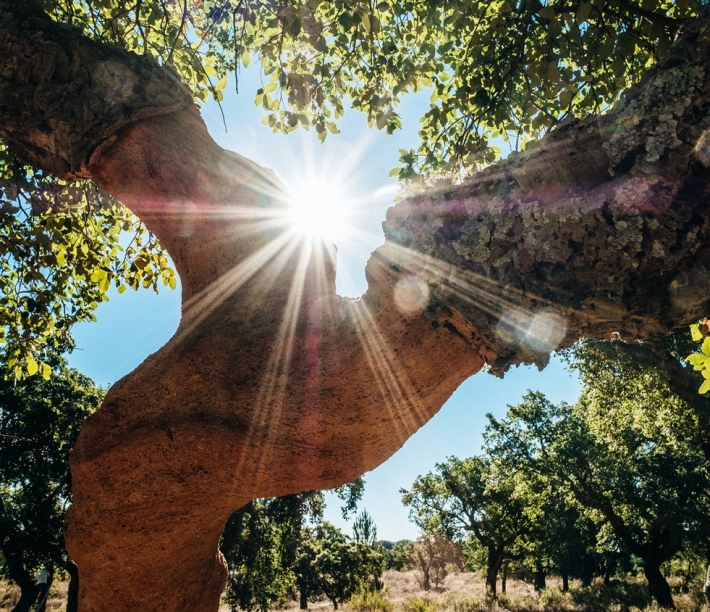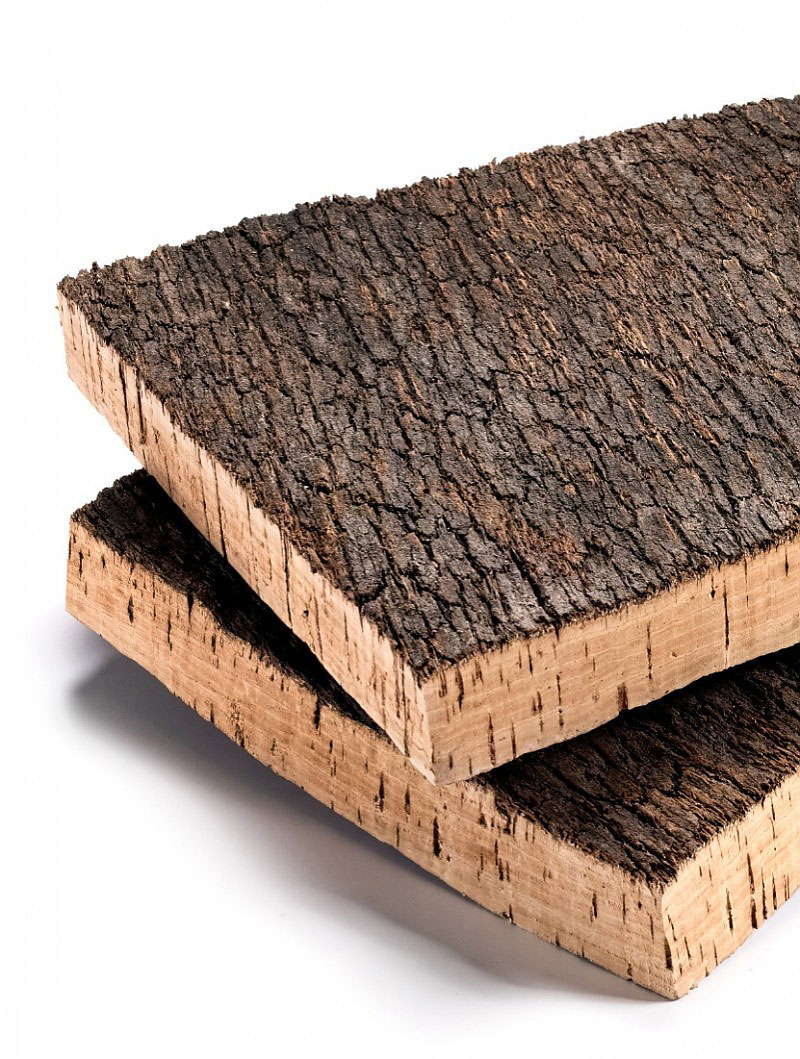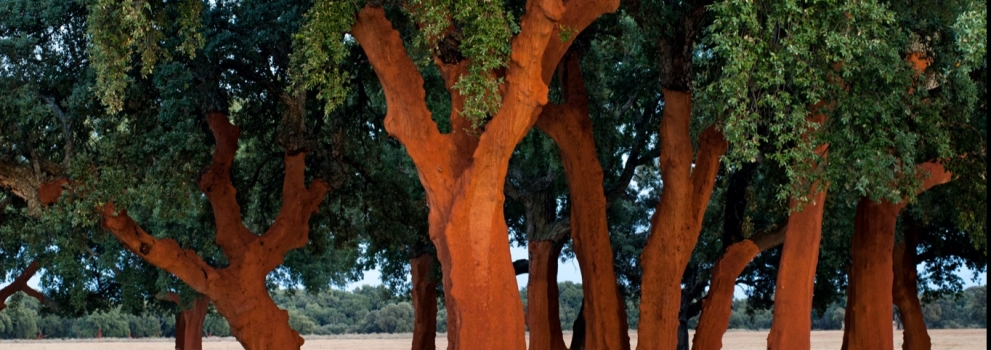100 percent natural, reusable and recyclable, cork is, whether from the environmental, social or economic perspectives, one of the world’s most versatile materials.

Cork is the bark of the Cork Oak tree (Quercus suber L). Lightweight, impermeable to liquids and gases, elastic and compressible, fire retardant and high abrasion resistant are just some of the characteristics of this nature’s jewel.
Understated but full of potential, cork is a raw material like no other due to its unique chemical composition.
Chemical composition of cork:
SUBERIN
Main component of the cell walls, responsible for the elasticity of the cork
LIGNIN
Insulating compound
POLYSACCHARIDES
Components of the cell walls that help define the texture of the cork
TANNINS
Polyphenolic compounds responsible for the colour
SEROIDS
Hydrophobic compounds that guarantee the impermeability of the cork

Key Characteristics
Acoustic Insulation
Thermal Insulation
Elasticity and Compressibility
Hypoallergenic
Impermeable to Liquids and Gases
Resistance to fire and high temperatures

